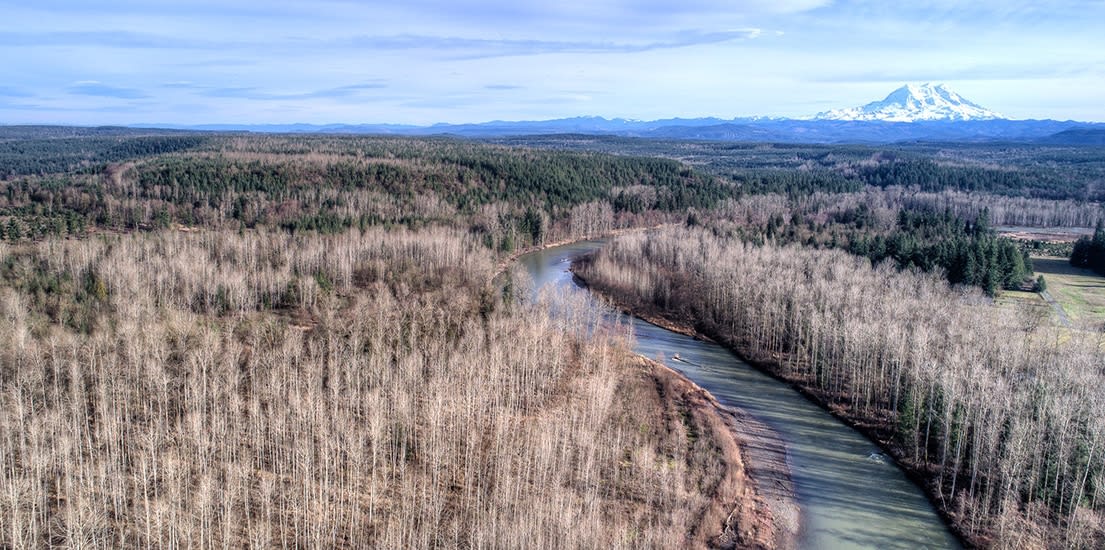A New Effort on Washington's Nisqually River

Flowing from the glaciers of Mount Rainier and flowing into the South Puget Sound, Washington’s Nisqually River is an anomaly in more ways than one. It’s the only river in the nation that is book-ended by a national park in its headwaters and a national wildlife refuge at its delta (Mount Rainer National Park up top and the Billy Frank Jr. Nisqually National Wildlife Refuge at the mouth). Though suburban development encroaches from the nearby cities of Olympia and Tacoma, the Nisqually also remains a relatively wild stream, undeveloped along much of its length—both rarities for Puget Sound rivers. And the Nisqually River mouth is the largest undeveloped delta in Puget Sound.
Anchored by these federally protected areas‚ the Nisqually boasts some of the best salmon and steelhead habitat in Puget Sound. It is home to seven native salmonid species: fall Chinook, winter steelhead and bull trout (all threatened), as well as coho, winter chum, pink salmon and coastal cutthroat trout. The hard-working Nisqually also delivers drinking water to the city of Olympia and provides half of the fresh water inflows to the South Sound, directly influencing water quality within the sound.
That the Nisqually remains largely undeveloped is a testament to generations of river guardians—citizens, anglers, land trusts and tribal activists like Billy Frank Jr. (for whom the wildlife refuge is named)—who have worked to keep this river healthy. This legacy continues today as others work to protect the Nisqually’s still-vulnerable middle reaches.
Toward that end, Western Rivers Conservancy is partnering with the Nisqually Land Trust and the Nisqually Indian Tribe to assemble a protected river corridor near the town of Yelm. In the coming year, WRC will purchase one of the largest remaining private tracts along this reach, a 172-acre property that traces a mile of the river. Our goal is to bring the property into the stewardship of the Nisqually Land Trust, which owns the land both upstream and downstream. Because of its superb habitat and strategic location, the land trust, the tribe and local organizations have long sought to dedicate this property as public, open space. If sold on the open market, the land could be developed into 34 homes, which would disrupt the mile-long natural river corridor and a key side-channel.
Instead, our efforts will allow the Nisqually room to move like a true wild stream, forming off-channel habitat and logjams that salmon need. The property’s stands of black cottonwood, big leaf maple and western red cedar trees shelter the river and provide habitat for deer, elk, red-legged frog, great blue heron and numerous other migratory birds, otter, beaver and many other species. As the trees grow, they’ll draw northern spotted owl and marbled murrelet to nest.
The project also has great potential to enhance the planned 22-mile Nisqually River Water Trail with publicly accessible resting spots, including possible campsites for boaters—a boon for paddlers, anglers and nature-watchers alike.
In a rapidly growing region that is losing fish and wildlife habitat faster than it is gaining it, this project will help tip the scales in the other direction, ensuring the Nisqually remains a stronghold for native fish and a beloved nature escape, just a short drive from most of Puget Sound’s residents.
